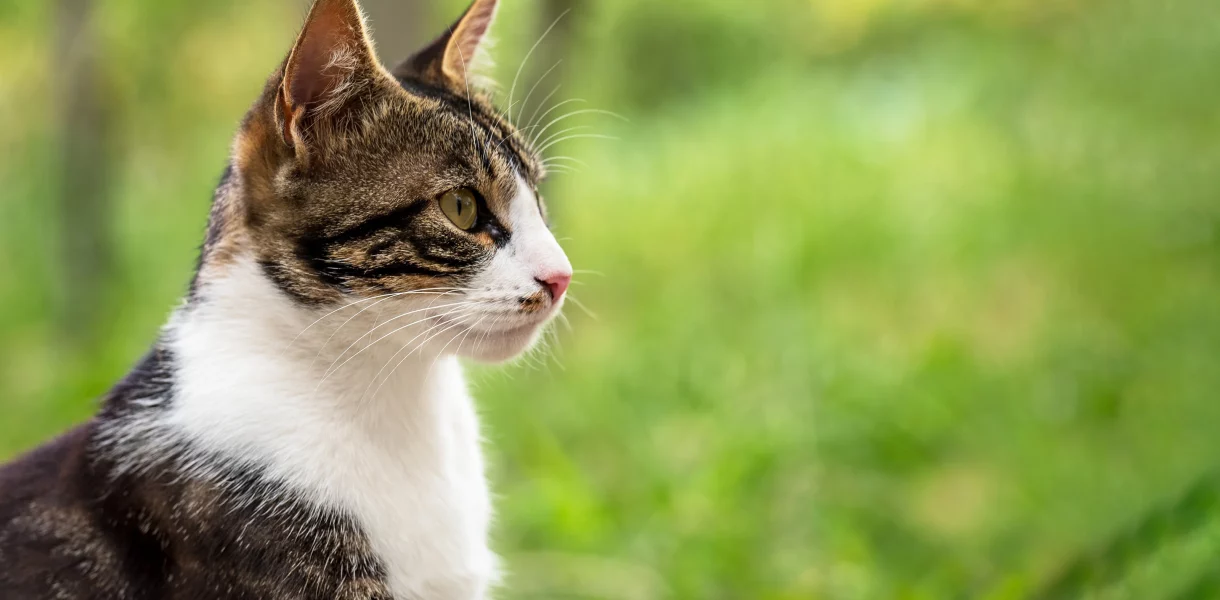A new study delves into the ability of domestic cats to listen to their caregivers and react to brief stimuli.
Published in Scientific Reports, the study explores the remarkable skill of cats to form associations between words and images in a very short time.
10,000 Years of Evolution
Cats and humans have shared their lives for at least 10,000 years. During this time, domestic cats have shrunk in size, changed the color of their fur, and softened their once-wild demeanor. But perhaps more intriguingly, cats may listen to humans far more attentively than we realize.
A study led by Japanese scientists has revealed that domestic cats can rapidly form associations between images and words—a process fundamental to language acquisition.
The Experiment
Originally designed for human babies in the 1990s, the experiment involved 31 cats observing two images on a computer screen—a sun and a unicorn. As the images expanded and shrank over nine seconds, a recording of their caregiver’s voice played two nonsense words: keraru for the unicorn and parumo for the sun.
The cats watched the sequences until they became bored, which researchers determined by the cats no longer looking at the screen. After a short break, the sequence was repeated, but this time the words were swapped.
The cats spent an average of 33% more time looking at the screen during this phase, suggesting they noticed the mismatch and had formed associations between the words and images during the initial trial.
Faster Than Human Babies
Lead researcher Shao Takagi, a cognitive scientist at Azabu University in Japan, was surprised to find that “cats, like human babies, can form associations between words and images in a very short time.” Cats learned the word-image pairings after just two nine-second lessons, whereas 14-month-old babies required four 15-second lessons.
Takagi clarified, however, that this doesn’t mean cats learn faster than humans. Instead, cats lose interest in stimuli quickly, making it seem as though they learn more rapidly.
Genetic Shifts and Sensitivity to Sounds
Cats’ unique behavior might be rooted in their genetics. A 2014 study published in PNAS compared the genomes of 22 domestic cats to their wild counterparts in Europe, identifying 13 genes that had changed significantly. These genetic adaptations may have enhanced domestic cats’ cognitive abilities, enabling them to pay attention to humans—a behavior often rewarded with food.
Eleonora Toresi, a veterinarian specializing in feline behavior, notes that cats’ advanced auditory range makes them particularly sensitive to sounds. “Cats have a much wider hearing range than humans, dogs, and many other animals,” she explains.
This sensitivity could explain their ability to pick up on brief, intense stimuli like those used in Takagi’s experiments. However, Toresi cautions that it’s difficult to know whether the cats stopped associating the sounds and images or simply became bored.
Beyond Association: Do Cats Understand Us?
Despite their apparent ability to form word-image pairings, cats don’t actually comprehend language. Ignacio Morgado, a psychobiologist at the Autonomous University of Barcelona, emphasizes that cats’ behavior in the study is not evidence of linguistic ability. “Cats can discriminate between words and animations, not because of their meaning, but due to their ability to associate sounds and images,” he explains.
Rodrigo Quian Quiroga, a neuroscientist, adds that cats respond to their owners’ calls out of survival instincts. “If a cat grows up with humans calling out to it, it makes sense for the cat to associate these calls with subsequent actions, such as feeding,” he says.
Avoiding Anthropomorphism
There’s a common tendency to anthropomorphize animals, attributing human characteristics to them. Toresi acknowledges that while she treats her cats like her children, she never forgets they are animals with unique behaviors and needs. “The key is to understand their nature. I don’t expect them to comprehend words,” she explains.
Understanding how cats perceive us is crucial for improving their quality of life. “We still have much to learn about cats and their behavior,” Toresi says. Studies like these can help us better communicate with our pets, ultimately strengthening the bond between humans and felines.



